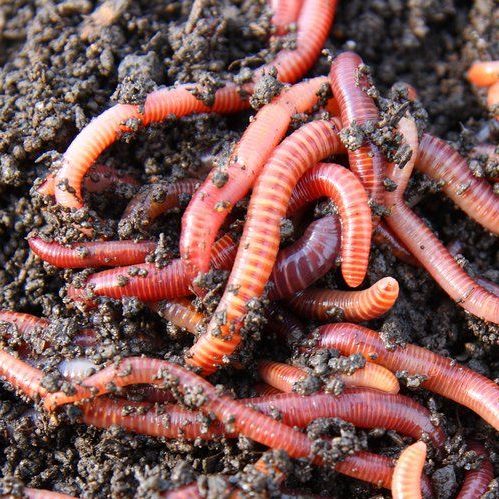Red Wigglers: The Unsung Heroes of Organic Waste Recycling
Red wigglers, or Eisenia fetida, act as vital agents in the organic waste reusing procedure, changing thrown out products right into important vermicompost. Their effective breakdown of natural issue not just enhances soil high quality but also adds to sustainable waste administration techniques. As the world progressively seeks options to fight waste accumulation and improve farming productivity, recognizing the duty of these worms comes to be crucial. What devices allow them to prosper in garden compost atmospheres, and just how can they be efficiently utilized in both residential and industrial settings? Checking out these questions discloses the more comprehensive implications of vermicomposting in our ecological landscape.
What Are Red Wigglers?
The exceptional strength of red wigglers, medically referred to as Eisenia fetida, underscores their important role in natural waste recycling. These small, reddish-brown earthworms are usually found in disintegrating raw material, such as compost heap and manure lots. Lake Hickory Bait. Unlike various other earthworm species, red wigglers grow in nutrient-rich settings and are very efficient at damaging down organic products, making them essential for vermicomposting

Benefits of Composting With Worms
Composting with worms, especially red wigglers, supplies numerous benefits that enhance both waste administration and dirt wellness. These worms efficiently damage down organic waste, converting it into nutrient-rich vermicompost that enriches soil. This process accelerates decay, enabling a quicker recycling of kitchen area scraps and other organic materials compared to conventional composting approaches.
Additionally, the vermicompost created by red wigglers is teeming with helpful bacteria, which help boost soil structure, oygenation, and dampness retention. This boosts the total health and wellness of plants, advertising vigorous growth and increased returns in gardens and farming setups. Furthermore, using worms in composting decreases the manufacturing of greenhouse gases, such as methane, adding to a more lasting waste monitoring system.

Exactly How to Start Vermicomposting
Establishing a vermicomposting system is a simple process that can produce significant benefits for both waste management and soil enrichment. To start, choose a suitable container, such as a plastic bin or wooden box, with appropriate ventilation holes to make sure correct air movement. The dimensions should preferably be around 2 feet by 3 feet, permitting sufficient room for the worms to flourish.
Next, prepare bed linens product, which can include shredded paper, cardboard, or coconut coir. This bed linens ought to be dampened to create an ideal environment for the worms. When the bedding remains in location, introduce red wigglers (Eisenia fetida) into the container, usually around one pound of worms for each square foot of surface area.
Adhering to the positioning of worms, include organic waste, such as fruit and veggie scraps, coffee premises, and crushed eggshells. With these actions, you will efficiently launch a vermicomposting system that adds to sustainable waste management and enriches your dirt.
Preserving a Healthy And Balanced Worm Container
Carefully mixing the bed linen and food scraps every couple of weeks prevents compaction and makes certain that all worms have access check that to oxygen. In addition, it is important to feed the worms properly.
If the bin ends up being as well hot or chilly, the worms might end up being worried. By diligently handling these aspects, one can keep a durable and productive worm bin.
Effect On Sustainable Living
The successful upkeep of a worm container not only profits the health of red wigglers however also contributes dramatically to lasting living methods. By reusing organic waste, such as cooking area scraps and yard particles, red wigglers aid divert significant amounts of material from land fills. This decrease in waste not only reduces greenhouse gas exhausts yet additionally decreases the environmental burden connected with waste monitoring.
Furthermore, the castings produced by red wigglers act as a nutrient-rich organic fertilizer, improving dirt wellness and advertising plant growth. This natural alternative to chemical fertilizers supports sustainable agriculture and horticulture techniques, decreasing reliance on artificial inputs that can damage environments. Furthermore, worm composting fosters recognition of waste management, encouraging individuals and neighborhoods to take on even more sustainable routines.

Verdict
In summary, red wigglers work as vital contributors to natural waste reusing with their effective decomposition of organic products. Their capability to produce nutrient-rich vermicompost boosts dirt health and supports sustainable farming practices. By integrating vermicomposting right into waste management techniques, individuals and neighborhoods can significantly lower waste while advertising ecological sustainability. The role of Eisenia fetida in fostering healthy and balanced communities underscores the significance of these organisms in attaining lasting living and enhancing soil fertility.
Comments on “Trust Red Wiggler Express for Reliable and High-Quality Lawn Care Options”